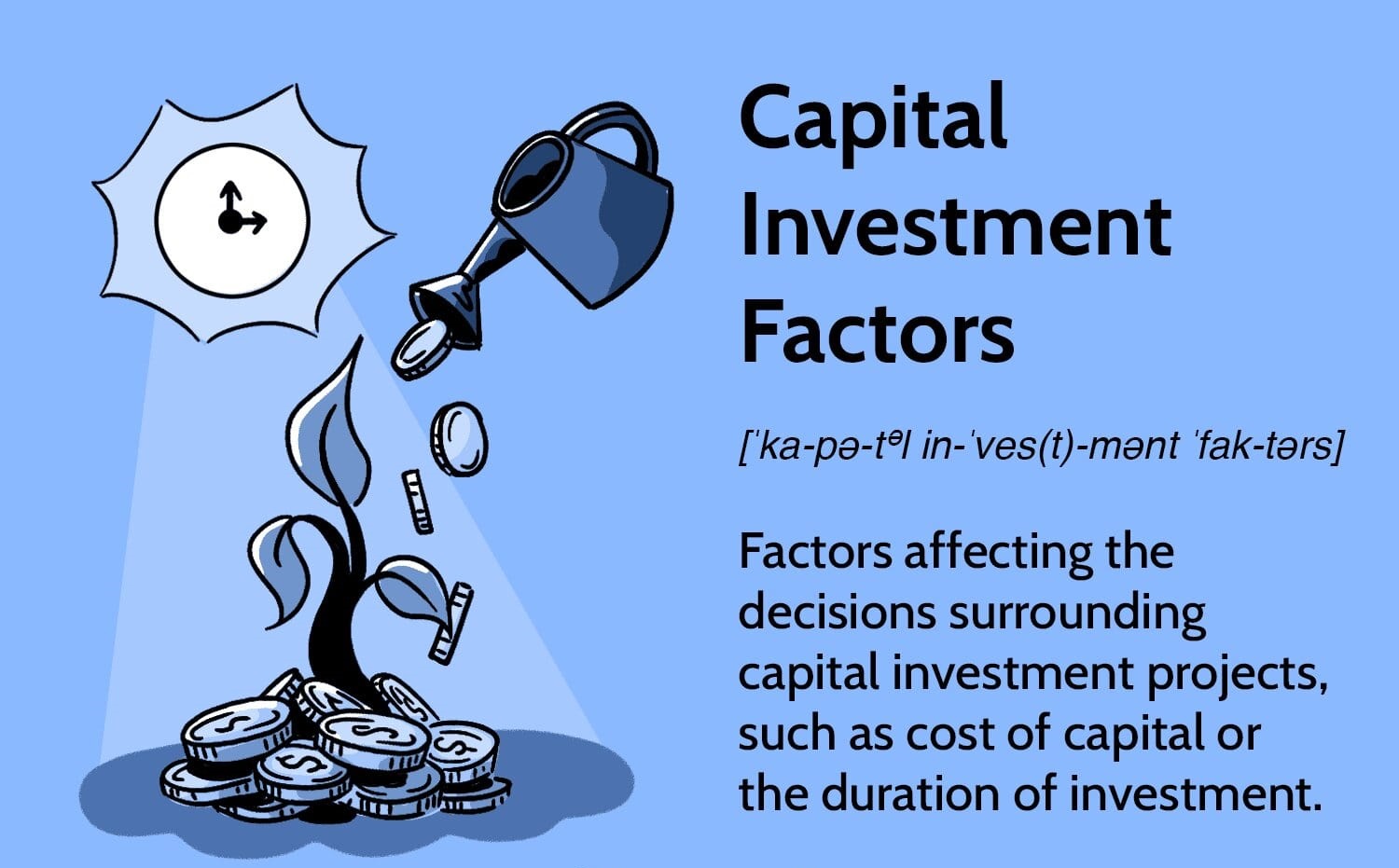Introduction
Welcome to the world of fintech startups, where innovation meets finance and technology. In this rapidly evolving sector, discount rates play a crucial role in determining the value of these companies. But what exactly is a discount rate, and why is it important for startup fintech companies?
A discount rate is the rate of return used to determine the present value of future cash flows. It is a way to account for the time value of money, providing a way to value future earnings in today’s terms. For startup fintech companies, where cash flows might be uncertain and risk is high, the discount rate becomes even more significant in assessing the viability and potential value of these ventures.
The importance of discount rates for startup fintech companies cannot be overstated. These rates provide a benchmark for evaluating investment opportunities, determining project feasibility, and estimating the value of the company. By discounting future cash flows, investors and stakeholders can assess the risk involved and make informed decisions.
Startup fintech companies often face unique challenges and uncertainties. They operate in a dynamic and highly competitive landscape, where technological advancements, regulatory changes, and market conditions can make or break their success. The discount rate serves as a tool to account for these risks and uncertainties and reflect them in the valuation process.
When determining the discount rate for startup fintech companies, several factors must be considered. These factors include the cost of capital, risk profile, market conditions, comparables, and the regulatory environment. Each of these elements contributes to the overall assessment of the discount rate and the valuation of the startup fintech company.
Next, we will delve deeper into each of these factors and explore how they influence the determination of the discount rate for startup fintech companies. By understanding and analyzing these components, investors and stakeholders can make well-informed decisions and navigate the complex world of fintech startups with confidence.
What is a discount rate?
In the world of finance, a discount rate refers to the rate of return used to determine the present value of future cash flows. It takes into account the time value of money, which means that receiving a certain amount of money in the future is considered less valuable than receiving it today. By discounting future cash flows, the rate provides a way to measure the current value of those future earnings.
The concept of the discount rate can be better understood through an example. Let’s say you have the opportunity to receive $1,000 a year from now. However, you might have other investment options that could potentially earn you a higher return. In this case, you would consider the opportunity cost of investing that money elsewhere instead of receiving it in the future. The discount rate is the rate of return you would require to compensate for this opportunity cost.
For startup fintech companies, the discount rate has particular significance. As these companies operate in a dynamic and often uncertain environment, the discount rate helps investors and stakeholders assess the risk and value of their ventures. It provides a measure of the level of uncertainty and accounts for the investment’s risk profile.
The discount rate for startup fintech companies is typically higher than for more established and stable businesses. This higher rate reflects the higher degree of risk associated with startups. Factors such as technological changes, market competition, and regulatory uncertainties can significantly impact the cash flows and future earnings of these companies. Therefore, the discount rate must be adjusted accordingly.
Furthermore, the discount rate is not a static figure but varies depending on the specific circumstances of the startup fintech company. It can be influenced by factors such as the stage of the company’s development, the market segment it operates in, and the level of competition it faces. Evaluating these variables allows for a more accurate determination of the discount rate that appropriately considers the unique characteristics of the startup fintech company.
Now that we have a better understanding of what a discount rate is and its relevance to startup fintech companies, let’s explore the importance of discount rates in more detail and the factors to consider when determining the discount rate for these companies.
Importance of discount rate for startup fintech companies
The discount rate is of utmost importance for startup fintech companies as it serves as a critical tool for assessing the viability and value of these ventures. It helps investors and stakeholders make informed decisions by accounting for the time value of money and the inherent risk associated with startups.
One key importance of the discount rate for startup fintech companies is its role in evaluating investment opportunities. As these companies often require significant capital to fuel their growth, attracting investors becomes paramount. By applying the appropriate discount rate, investors can assess the potential return on their investment and make informed decisions about allocating their funds. The discount rate allows for a thorough analysis of the risk and profitability of investing in a particular fintech startup.
Furthermore, the discount rate is essential for determining project feasibility. Startups in the fintech space often have ambitious goals and future cash flows that may not be realized immediately. The discount rate helps evaluate the economic viability of these projects by considering the present value of future expected cash flows. This analysis allows for a better understanding of whether the projected returns outweigh the costs and potential risks.
In addition, the discount rate plays a crucial role in estimating the value of the startup fintech company. Valuation is a fundamental aspect for investors and stakeholders, as it provides insight into the potential returns they can expect. By discounting future cash flows, the valuation process takes into account the uncertainties and risk associated with the industry, market conditions, and the specific characteristics of the company. A higher discount rate applied to startup fintech companies reflects the higher risk involved and helps stakeholders make informed decisions about the company’s value.
Moreover, the discount rate enables ongoing financial planning and decision-making for startup fintech companies. As these companies navigate complex market conditions and face ever-changing regulatory environments, having a clear understanding of the appropriate discount rate is crucial. It allows for strategic decisions about capital allocation, operational budgets, and investment prioritization.
In summary, the discount rate holds significant importance for startup fintech companies. It helps evaluate investment opportunities, determine project feasibility, estimate company value, and guide financial planning and decision-making. By understanding and applying the appropriate discount rate, investors and stakeholders can navigate the unique challenges and uncertainties of the fintech startup world with greater confidence.
Factors to Consider When Determining the Discount Rate for Startup Fintech Companies
When determining the discount rate for startup fintech companies, several factors must be carefully considered. These factors help assess the level of risk associated with the investment and ensure that the discount rate accurately reflects the specific circumstances of the company. Let”s explore some of the key factors:
1. Cost of Capital: The cost of capital represents the rate of return required by investors to compensate for the use of their funds. It takes into account factors such as the prevailing interest rates, market conditions, and the specific risk profile of the startup fintech company. Understanding the cost of capital is crucial for determining an appropriate discount rate that aligns with the expected returns of potential investors.
2. Risk Profile: The risk profile of a startup fintech company plays a significant role in determining the discount rate. Startups are inherently riskier than established companies due to uncertainties surrounding their business models, market acceptance, and revenue streams. Factors such as the stage of development, competitive landscape, and technological complexity all contribute to the risk profile. A higher risk profile requires a higher discount rate to adequately account for the potential volatility and unpredictability of cash flows.
3. Market Conditions: The overall market conditions in which a fintech startup operates can impact the discount rate. Factors such as macroeconomic trends, industry growth prospects, and market competition all play a role. In a highly competitive market with rapidly changing technology and market dynamics, the discount rate may need to be adjusted to reflect the potential risks and uncertainties.
4. Comparables: Comparables refer to similar companies or investments that can serve as benchmarks for assessing the discount rate. Analyzing the discount rates used in comparable startup fintech companies or industry peers can provide valuable insights. However, it is crucial to consider the differences in risk profiles, growth potential, and market conditions when using comparables as a reference.
5. Regulatory Environment: Fintech startups are subject to various regulatory frameworks, which can significantly affect their risk profile and future cash flows. The discount rate should reflect the potential regulatory risks and uncertainties associated with the specific jurisdiction and industry segment in which the company operates.
By carefully considering these factors, investors and stakeholders can determine a discount rate that accurately reflects the risk and potential returns of investing in a startup fintech company. It is essential to conduct thorough analysis and evaluation, taking into account the unique circumstances and growth prospects of the company.
Now that we have explored the factors to consider when determining the discount rate for startup fintech companies, let’s delve deeper into the specific elements such as the cost of capital, risk profile, market conditions, comparables, and regulatory environment in subsequent sections.
Cost of Capital
The cost of capital is a critical factor to consider when determining the discount rate for startup fintech companies. It represents the rate of return required by investors to compensate for the use of their funds. In other words, it is the cost of financing the startup’s operations and growth. The cost of capital is influenced by various factors and plays a significant role in determining the appropriate discount rate.
There are two main components of the cost of capital: debt and equity. Debt represents the borrowed funds, such as loans or bonds, that the company utilizes to finance its activities. Equity, on the other hand, refers to the ownership stake in the company held by the investors or shareholders.
When assessing the cost of debt, factors such as interest rates, creditworthiness, and collateral play a role. The interest rate on debt represents the compensation the lender requires in exchange for lending their funds. Startups often face higher interest rates due to their higher risk profile and limited track record. Additionally, the cost of debt may be influenced by the collateral pledged, which provides security to the lender.
The cost of equity is determined by the expected return demanded by investors in exchange for owning shares in the company. Equity investors expect a higher return compared to debt investors due to the higher risk associated with equity ownership. The cost of equity is influenced by factors such as the company’s growth prospects, industry dynamics, and management team. Investors in startup fintech companies typically expect a higher return to compensate for the potential volatility and uncertainty associated with these ventures.
Both the cost of debt and equity are weighted based on their relative proportion in the capital structure of the startup fintech company. This weighted average cost of capital (WACC) provides a comprehensive measure of the cost of financing and serves as a benchmark for determining the discount rate.
The cost of capital directly impacts the discount rate by serving as a reference point for the required rate of return investors expect for investing in the startup fintech company. A higher cost of capital translates to a higher discount rate as stakeholders demand a greater return to compensate for the perceived risk and opportunity cost associated with investing in the company.
It is crucial to consider the prevailing interest rates, market conditions, and the specific risk profile of the startup fintech company when determining the cost of capital. Thorough analysis and evaluation are required to accurately estimate the cost of capital and the subsequent discount rate.
Now that we have discussed the role of the cost of capital in determining the discount rate for startup fintech companies, let’s explore the next factor – the risk profile.
Risk Profile
The risk profile of a startup fintech company is a crucial consideration when determining the discount rate. Startups inherently carry higher risk compared to established companies due to various factors such as limited track record, uncertain cash flows, and potential market volatility. Assessing and understanding the risk profile is essential for accurately estimating the discount rate and valuing the company.
One aspect of the risk profile is the stage of development of the startup. Early-stage fintech companies are often riskier than those in later stages. This is because they have limited operating history, unproven business models, and higher uncertainty surrounding their ability to generate consistent revenue and profitability. As such, early-stage fintech companies typically face higher discount rates to compensate for the additional risk and uncertainty.
The competitive landscape and market dynamics also contribute to the risk profile of a startup fintech company. Fintech is a rapidly evolving and highly competitive industry. The presence of established players, emerging startups, and potential disruptors can significantly impact the risk associated with a particular startup. Increased competition can lead to pricing pressures, customer acquisition challenges, and potential market share dilution. These factors should be considered when determining the discount rate for startup fintech companies.
Technological complexity is another element that influences the risk profile. Many fintech companies rely on advanced technologies like artificial intelligence, blockchain, and machine learning. While these technologies offer tremendous opportunities, they also introduce uncertainties and potential risks. The successful implementation and scalability of these technologies can be challenging, requiring significant investment and expertise. The risk associated with technological complexities should be factored into the discount rate assessment.
Regulatory uncertainty is another aspect that affects the risk profile of fintech startups. The fintech industry is subject to evolving regulations, which can vary across jurisdictions. Compliance with these regulations can be complex and costly, particularly for startups that may lack the resources and established processes. Changes in regulations or enforcement actions can impact the business model, operations, and revenue streams of fintech companies. The potential regulatory risks should be evaluated and reflected in the discount rate.
Overall, understanding the risk profile of a startup fintech company is crucial for determining the appropriate discount rate. By evaluating factors such as the stage of development, competitive landscape, technological complexity, and regulatory environment, stakeholders can assess the level of risk involved and adjust the discount rate accordingly.
Now that we have explored the risk profile as a factor in determining the discount rate for startup fintech companies, let’s move on to discuss the impact of market conditions.
Market Conditions
Market conditions play a significant role in determining the discount rate for startup fintech companies. The overall state of the market, industry trends, and competitive dynamics directly impact the risk and potential returns associated with investing in these companies. Assessing market conditions is essential for accurately estimating the discount rate and valuing the startup fintech company.
One aspect of market conditions to consider is macroeconomic trends. Economic factors such as interest rates, inflation, and GDP growth can influence the discount rate. During periods of low interest rates and a favorable economic climate, the discount rate may be lower. Conversely, during times of high interest rates or economic uncertainty, the discount rate may be higher as investors demand a greater return to compensate for the perceived risk.
Industry growth prospects are also a critical component of market conditions. The fintech industry has experienced rapid growth in recent years, driven by technological advancements, changing consumer preferences, and regulatory developments. Understanding the potential for industry expansion and market acceptance of fintech solutions is vital in assessing the risk and potential returns of a startup fintech company. Market conditions that support a positive growth outlook can lead to a lower discount rate.
Furthermore, competitive dynamics play a significant role in market conditions. The presence of established players, emerging startups, and potential entrants can impact the risk associated with a particular startup. A highly competitive market with numerous players vying for market share can lead to pricing pressures, increased customer acquisition costs, and potential barriers to entry. These factors should be considered when determining the discount rate for startup fintech companies.
Market conditions can also contribute to technological disruption and business model innovation. Startups operating in a rapidly evolving market, characterized by technological advancements, can experience both opportunities and risks. Technological disruptions can render existing business models obsolete, requiring startups to continuously innovate and adapt. The discount rate should reflect the potential risks and rewards associated with operating in a dynamic and evolving market.
It is crucial to conduct thorough market research and analysis to assess the prevailing market conditions. This includes analyzing industry reports, tracking industry trends, and monitoring competitor activities. By understanding the current market conditions and projecting future developments, stakeholders can accurately estimate the discount rate and make informed decisions regarding the valuation of startup fintech companies.
Now that we have explored the impact of market conditions on determining the discount rate for startup fintech companies, let’s move on to discuss the use of comparables.
Comparables
Comparables, or comparable companies, can provide valuable insights when determining the discount rate for startup fintech companies. Comparables refer to similar companies or investments that can serve as benchmarks for evaluating the risk and potential returns associated with a specific startup fintech company.
When using comparables, it is important to consider factors such as the industry segment, growth stage, business model, and market conditions. These factors help ensure that the comparables are relevant and provide an accurate reflection of the risk profile and valuation of the startup fintech company under consideration.
One common approach when using comparables is to analyze the discount rates employed by similar startup fintech companies in the market. This analysis involves assessing the discount rates used in comparable companies with similar business models, target markets, and growth prospects. By benchmarking against these industry peers, stakeholders can identify a range of discount rates that are commonly accepted within the industry.
However, it is important to exercise caution when using comparables. Every startup fintech company is unique, and there can be significant differences in risk profiles, growth potentials, and market conditions, even among seemingly similar companies. It is crucial to carefully evaluate and adjust the comparables to account for any differing characteristics or circumstances that may affect the discount rate estimation.
Another consideration when using comparables is the availability and reliability of data. Obtaining accurate and up-to-date financial information from comparable companies can be challenging, especially for startups. Additionally, the quality and credibility of the data can vary. It is essential to ensure that the comparables used are based on reliable and validated information to make informed decisions about the discount rate.
While comparables can provide valuable guidance, they should not be the sole basis for determining the discount rate for a startup fintech company. Each company has its unique set of circumstances and risk factors that must be taken into account. The discount rate estimation should incorporate a comprehensive analysis that considers not only the comparables but also other relevant factors, such as the cost of capital, risk profile, market conditions, and regulatory environment.
In summary, comparables can serve as a useful reference point when determining the discount rate for startup fintech companies. By analyzing the discount rates used by similar companies and adjusting for differences in risk profiles and market conditions, stakeholders can gain valuable insights into the appropriate discount rate for the specific company under consideration.
Now that we have discussed the role of comparables in determining the discount rate, let’s move on to the impact of the regulatory environment.
Regulatory Environment
The regulatory environment is a crucial factor to consider when determining the discount rate for startup fintech companies. Fintech startups operate in a highly regulated industry, and the regulatory landscape can significantly impact their risk profile and potential returns. Understanding and evaluating the regulatory environment is essential to accurately estimate the discount rate and assess the value of the startup.
Regulatory factors can include licensing requirements, compliance obligations, consumer protection laws, and data privacy regulations, among others. These regulations aim to ensure the integrity and stability of financial markets, protect consumers, and maintain trust in the fintech industry. However, compliance with these regulations can pose challenges for startups, particularly those with limited resources and expertise.
The regulatory environment of a particular jurisdiction or market can impact the risk and cash flow projections of a startup fintech company. Changes in regulations or new enforcement measures can affect business models, operational costs, and revenue streams. Startups may need to allocate resources to compliance activities, invest in risk management systems, or adapt their business strategies to remain compliant.
It is important to evaluate the specific regulatory requirements that apply to the startup fintech company. This assessment should consider the jurisdiction in which the company operates and the market segments it targets. Different regions have varying regulatory frameworks and approaches, which can influence the level of risk and compliance costs faced by the startup.
Furthermore, staying abreast of regulatory developments and potential changes is crucial. Regulatory landscapes in the fintech industry are highly dynamic, with new regulations and guidelines often being introduced to address emerging risks and technology advancements. Companies must monitor and adapt to these changes to mitigate regulatory risks effectively.
The impact of the regulatory environment on the discount rate lies in the potential risks and uncertainties associated with compliance and legal obligations. Higher levels of regulatory requirements and compliance costs can increase the risk profile of the company, resulting in a higher discount rate to reflect the additional risk.
However, it is essential to note that a robust regulatory environment can also offer advantages for startup fintech companies. Well-defined regulations can provide a level playing field, instill confidence in investors and consumers, and create opportunities for innovative solutions that address regulatory challenges.
Ultimately, assessing the regulatory environment is crucial for determining an appropriate discount rate for startup fintech companies. By evaluating the regulatory framework, compliance requirements, and potential risks, stakeholders can account for the impact of regulations on the risk profile and projected cash flows. This allows for more accurate valuations and informed investment decisions.
Now that we have explored the impact of the regulatory environment on the discount rate, let’s move on to conclude our discussion.
Conclusion
Determining the discount rate for startup fintech companies is a complex process that requires careful consideration of various factors. The discount rate plays a crucial role in evaluating investment opportunities, determining project feasibility, estimating company value, and guiding financial planning and decision-making.
Throughout this article, we have explored the key factors involved in determining the discount rate for startup fintech companies. The cost of capital, risk profile, market conditions, comparables, and regulatory environment are all important elements to consider in this evaluation. Each factor contributes to the overall assessment of the discount rate and provides valuable insights into the potential risks and returns associated with investing in a specific startup fintech company.
The cost of capital reflects the rate of return required by investors to compensate for the use of their funds. The risk profile takes into account factors such as the stage of development, competitive landscape, technological complexity, and regulatory uncertainties. Market conditions influence the discount rate by reflecting macroeconomic trends, industry growth prospects, and competitive dynamics. Comparables provide benchmarks for evaluating the risk and potential returns based on similar companies or investments. The regulatory environment reflects the legal and compliance obligations that can impact the risk and cash flow projections of a startup fintech company.
By carefully considering these factors and conducting thorough analysis and evaluation, stakeholders can determine an appropriate discount rate that aligns with the specific characteristics and circumstances of the startup fintech company. This allows for a more accurate valuation and informed decision-making.
It is important to remember that determining the discount rate is not a one-size-fits-all process, and it requires a comprehensive understanding of the unique characteristics and risks associated with each startup fintech company. Additionally, the discount rate should be periodically reviewed and adjusted to reflect changes in market conditions, regulatory environments, and the overall risk profile of the company.
In summary, the discount rate serves as a crucial tool in assessing the value and viability of startup fintech companies. By carefully considering the factors discussed in this article, stakeholders can navigate the complex world of fintech startups with confidence and make informed decisions about investment opportunities and valuations.

























